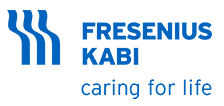预约演示
更新于:2025-05-07
Mild pain
轻度疼痛
更新于:2025-05-07
基本信息
别名 Mild pain、Mild pain (finding)、mild pain + [1] |
简介 1-3 Mild pain |
关联
5
项与 轻度疼痛 相关的药物靶点 |
作用机制 COX抑制剂 |
原研机构 |
非在研适应症 |
最高研发阶段批准上市 |
首次获批国家/地区 澳大利亚 |
首次获批日期2008-10-28 |
靶点 |
作用机制 COX抑制剂 |
在研机构 |
最高研发阶段批准上市 |
首次获批国家/地区 日本 |
首次获批日期1973-08-08 |
靶点 |
作用机制 COX抑制剂 |
原研机构 |
最高研发阶段批准上市 |
首次获批国家/地区 中国 |
首次获批日期1966-01-01 |
60
项与 轻度疼痛 相关的临床试验CTR20250588
布洛芬混悬液(100 mL:2 g)健康人体生物等效性研究
主要目的:本研究以澳美制药厂有限公司研发的布洛芬混悬液(规格:100 mL:2 g)为受试制剂,按生物等效性研究的有关规定,以上海强生制药有限公司生产的布洛芬混悬液(商品名称:美林®,规格:100 毫升:2 克)为参比制剂,评估受试制剂和参比制剂在空腹条件下给药后的生物等效性。次要目的:观察受试制剂布洛芬混悬液和参比制剂布洛芬混悬液(商品名称:美林®)在健康受试者中的安全性。
开始日期2025-03-17 |
申办/合作机构 |
CTR20250255
布洛芬混悬液在健康受试者中的单中心、随机、开放、单次给药、两周期、双交叉、空腹和餐后状态下的生物等效性研究
主要研究目的:以上海强生制药有限公司持证的布洛芬混悬液(商品名:美林®;100 mL:2 g)为参比制剂,以中山可可康制药有限公司生产的布洛芬混悬液(100 mL:2 g)为受试制剂,通过单中心、随机、开放、单次给药、两制剂、两周期、双交叉研究来评价两种制剂在空腹和餐后状态下的人体生物等效性。
次要研究目的:观察受试制剂和参比制剂在中国健康受试者中的安全性。
开始日期2025-02-22 |
申办/合作机构 |
CTR20250470
不同剂量注射用双氯芬酸钠在中国健康成年受试者多次静脉推注的药代动力学及安全性的单中心、随机、双盲、安慰剂平行对照Ib期临床研究
主要研究目的:
评价多次静脉推注不同剂量的注射用双氯芬酸钠在中国健康成年受试者体内的药代动力学(PK)特征。
次要研究目的:
初步评价多次静脉推注不同剂量的注射用双氯芬酸钠后中国健康成年受试者的安全性。
开始日期2025-02-18 |
申办/合作机构 |
100 项与 轻度疼痛 相关的临床结果
登录后查看更多信息
100 项与 轻度疼痛 相关的转化医学
登录后查看更多信息
0 项与 轻度疼痛 相关的专利(医药)
登录后查看更多信息
46
项与 轻度疼痛 相关的文献(医药)2025-04-01·Bone
Acute pain trajectories in elderly patients with fragility hip fractures
Article
作者: Juul, Alejandro ; Becker, Katherine S ; Ge, Michelle ; Goehl, Christina ; Sen, Sudipta ; Aycock, Madison ; de Haan, Johanna Blair ; Warner, Stephen J ; Potnuru, Paul ; Hernandez, Nadia
2025-03-01·Annales Pharmaceutiques Françaises
Self-medication of the pediatric population by parents in Morocco: Survey in the Midelt region
Article
作者: Meknassi Salime, Ghita ; El Hamdaoui, Omar ; Cherif Chefchaouni, Ali ; ElHamdaoui, Omar ; Elalaoui, Yassir
2024-09-01·Journal of Neural Transmission
Alterations in metabolites in the anterior cingulate cortex and thalamus and their associations with pain and empathy in patients with chronic mild pain: a preliminary study
Article
作者: Shigemura, Tomonori ; Yokokawa, Tokuzou ; Okada, Akihiro ; Shirayama, Yukihiko ; Hara, Akira ; Miyano, Kanako ; Osone, Fumio
23
项与 轻度疼痛 相关的新闻(医药)2025-02-24
·米内网
精彩内容
2月24日,NMPA官网显示,云鹏医药的布洛芬缓释胶囊通过仿制药一致性评价。布洛芬缓释胶囊为非甾体抗炎药,2023年在中国三大终端六大市场销售额超过18亿元。
布洛芬缓释胶囊是非甾体类消炎药物,它通过抑制前列腺素的合成从而起到解热、镇痛、消炎的作用,常用来治疗头疼,关节疼,牙疼,肌肉痛,神经痛等轻中度疼痛;也可以用于感冒引起的发热。布洛芬缓释胶囊是缓释制剂,使药物在体内缓慢释放,起效慢,作用时间长,可维持12小时止痛。
米内网数据显示,2023年中国三大终端六大市场(统计范围详见本文末)布洛芬缓释胶囊销售额超过18亿元,同比增长25.89%;2024年上半年其销售额超过7亿元,同比下滑25.94%。
中国三大终端六大市场布洛芬缓释胶囊销售情况(单位:万元)
来源:米内网格局数据库
布洛芬缓释胶囊为第三批国采品种,此前已有华北制药 、亨迪药业、新华制药、润都制药、上海信谊、 联邦制药等18家企业过评,云鹏医药为该品种第19家过评企业。
此前云鹏医药过评品种
来源:米内网一致性评价进度数据库
截至目前,云鹏医药已有8个品种甲硝唑片、异烟肼片、硝苯地平缓释片(Ⅱ)、利奈唑胺片、盐酸普萘洛尔片、格列齐特缓释片、瑞舒伐他汀钙片、布洛芬缓释胶囊通过/视同通过一致性评价。
资料来源:米内网数据库、NMPA注:米内网《中国三大终端六大市场药品竞争格局》,统计范围是:城市公立医院和县级公立医院、城市社区中心和乡镇卫生院、城市实体药店和网上药店,不含民营医院、私人诊所、村卫生室,不含县乡村药店;上述销售额以产品在终端的平均零售价计算。
本文为原创稿件,转载请注明来源和作者,否则将追究侵权责任。投稿及报料请发邮件到872470254@qq.com稿件要求详询米内微信首页菜单栏商务及内容合作可联系QQ:412539092
【分享、点赞、在看】点一点不失联哦
一致性评价
2025-01-18
·药时空
你的父母是否提起过,他们曾每夜痛得睡不着觉?
你的爷爷奶奶是否告诉过你,他们曾被“蛇缠腰”长期困扰?
“辛勤打工人”的你,会不会已经得过“带状疱疹”?
被人称为“不死的癌症”带来的“会呼吸的痛”,真的是“痛不欲生”,只有痛过的人才懂。
今天我们就来了解一下这种令不少人望而生畏的疾病!
据报道,全球普通人群带状疱疹的发病率为(3~5)/1000人年,亚太地区为(3~10)/1000人年,并逐年递增2.5%~5.0%。
全球带状疱疹的住院率为(2~25)/10万人年,死亡率为(0.017~0.465)/10万人年,复发率1%~ 10%。
我国≥50岁人群带状疱疹发病率为(2.9~5.8)/1 000人年,女性终身患病率(3.94%~7.9%)略高于男性(2.86% ~7.6%)[1]。
一.
什么是带状疱疹?
带状疱疹(herpes zoster)是由长期潜伏在脊髓后根神经节或颅神经节内的水痘-带状疱疹病毒(varicella-zoster virus,VZV)经再激活引起的感染性皮肤病。
带状疱疹是皮肤科常见病,除皮肤损害外,常伴有神经病理性疼痛,多见于年龄较大、免疫抑制或免疫缺陷等人群,严重影响患者生活质量。
二.
病因及发病机制
1.病原体特点及致病机制:
VZV可经飞沫和(或)接触传播,原发感染主要引起水痘。当机体抵抗力降低时,潜伏的病毒被再激活引起带状疱疹。
2.带状疱疹相关性疼痛的机制:
带状疱疹后神经痛(PHN)属于典型的神经病理性疼痛。
外周机制:受损的伤害性感受器异常放电导致外周敏化。
中枢机制:
①脊髓背角神经元的敏感性增高;
②脊髓抑制性神经元的功能下降;
③脊髓背角Aβ纤维脱髓鞘,与邻近C纤维形成新的突触;
④脊髓背角伤害性神经通路代偿性形成,使中枢对疼痛的反应阈值大大降低。
三.
带状疱疹的临床表现
1.典型临床表现
①前驱症状:可有轻度乏力、低热、食欲不振等全身症状,患处皮肤自觉灼热感或神经痛,触之有明显的痛觉敏感,也可无前驱症状。
②皮损特点:典型皮损表现为沿皮节单侧分布的成簇性水疱伴疼痛,研究显示好发部位为肋间神经(53%)、颈神经(20%)、三叉神经(15%)及腰骶部神经(11%)相应的皮节。
皮损沿某一周围神经区域呈带状排列,多发生在身体的一侧,一般不超过正中线。病程一般2~3周,老年人为3~4周。水疱干涸、结痂脱落后留有暂时性淡红斑或色素沉着[2]。
③自觉症状:疼痛为带状疱疹的主要症状,又称为疱疹相关性疼痛(ZAP),慢性期ZAP即PHN:出现皮疹后持续超过90 d的疼痛。
老年、体弱患者疼痛较为剧烈。除疼痛外,部分患者还会出现瘙痒。重度瘙痒会因患者不断搔抓继发皮肤苔藓样变。
2.特殊临床类型
①眼带状疱疹:多见于老年人,表现为单侧眼睑肿胀,也可表现为双侧;结膜充血,疼痛常较为剧烈,常伴同侧头部疼痛,可累及角膜形成溃疡性角膜炎。
②耳带状疱疹:系病毒侵犯面神经及听神经所致,表现为外耳道疱疹及外耳道疼痛。
③顿挫型带状疱疹:仅出现红斑、丘疹而不发生水疱。
④无疹型带状疱疹:仅有皮区疼痛而无皮疹。
⑤复发型带状疱疹:指非首次发生的带状疱疹,其在免疫正常人群中较为罕见,在免疫受抑者中复发率更高。
⑥中枢神经系统带状疱疹:侵犯大脑实质和脑膜时,发生病毒性脑炎和脑膜炎。
⑦内脏带状疱疹:侵犯内脏神经纤维时,引起急性胃肠炎、膀胱炎,表现为腹部绞痛、排尿困难、尿潴留等。
⑧泛发型带状疱疹:指同时累及2个及以上神经节,对侧或同侧多个皮节产生皮损。
⑨播散型带状疱疹:恶性肿瘤或免疫功能极度低下者,病毒经血液播散,导致除受累皮节外全身皮肤出现广泛性水痘样疹,常伴高热等全身中毒症状。
3.并发症
PHN为带状疱疹最常见的并发症。带状疱疹患者PHN发生率为5%~30%,多见于高龄、免疫功能低下患者。其疼痛部位通常比疱疹区域有所扩大,常见于单侧肋间神经、三叉神经(主要是眼支)或颈神经。
疼痛性质多样,可为烧灼样、电击样、刀割样、针刺样或撕裂样。一种疼痛为主,或多种疼痛并存。30%~50%的患者疼痛持续超过1年,部分病程可达10年或更长。
四.
带状疱疹的治疗
带状疱疹的治疗目标包括促进皮损消退,缓解疼痛,改善患者生活质量。及时进行针对性抗病毒治疗有助于皮损及时愈合,且可能缩短ZAP持续时间。
1.系统药物治疗
①抗病毒药物:是临床治疗带状疱疹的常用药物。目前批准使用的系统抗病毒药物包括阿昔洛韦、伐昔洛韦、泛昔洛韦、溴夫定和膦甲酸钠。这些药物的用法用量及不良反应见下表。
②镇痛治疗:疼痛常贯穿带状疱疹疾病的全过程,建议对不同程度的疼痛选用不同的镇痛药物。
轻中度疼痛可选用对乙酰氨基酚、非甾体类抗炎药或曲马多;中重度疼痛可使用治疗神经病理性疼痛的药物,如钙离子通道调节剂加巴喷丁、普瑞巴林,三环类抗抑郁药如阿米替林。带状疱疹后神经痛一线治疗药物见下表。
③糖皮质激素疗法:目前关于是否系统应用糖皮质激素治疗带状疱疹及PHN仍存在争议。
既往观点认为在带状疱疹急性发作3 d内系统应用糖皮质激素可以抑制炎症过程,缩短急性疼痛的持续时间和皮损愈合时间,但目前最新的欧洲及德国指南均未推荐系统应用糖皮质激素治疗。
④特殊人群的治疗:
肾功能不全:肾功能不全或持续下降者,初始给药前应检测血肌酐水平并根据肌酐值调整剂量及给药间隔,使用溴夫定则无需检测血肌酐水平。
VZV所致的脑膜炎/脑炎:美国感染病学会指南推荐阿昔洛韦治疗本病,轻中度病例静脉滴注10mg/kg每8 h 1次,连续治疗10~14d,而严重病例应持续治疗14~21d。
免疫功能低下患者:主要包括HIV/AIDS、恶性肿瘤、器官移植、干细胞移植患者和长期接受免疫抑制剂治疗患者等,无论是局限型还是播散型带状疱疹,均推荐静脉滴注阿昔洛韦8~10 mg/kg每8 h 1次,疗程7~10 d,根据病情需要可延长至10~14 d。
儿童:带状疱疹发病率较成年人低,且病情较成人轻,可口服阿昔洛韦20mg/kg每日4次;或慎重给予泛昔洛韦口服,体重<40kg者12.5mg/kg每8h 1次,体重≥ 40 kg者250~500 mg每8h 1次。重症患者可静脉滴注阿昔洛韦≤ 500 mg/m2或≤ 15mg/kg每8h1次。
妊娠、哺乳期:妊娠晚期患者可口服阿昔洛韦或伐昔洛韦,严重者静脉滴注阿昔洛韦,但妊娠20周前应慎用。哺乳期口服阿昔洛韦未见乳儿异常,但口服泛昔洛韦需停止哺乳。
老年人:易出现皮肤、内脏播散及其他并发症,宜采用溴夫定抗病毒药物积极治疗。
2.局部治疗
①物理治疗:物理治疗带状疱疹目前尚缺乏高质量研究报告。国内一项小型前瞻性研究显示,局部单纯外用阿昔洛韦乳膏等联合半导体激光治疗带状疱疹的疗效明显优于单纯外用阿昔洛韦乳膏等。
②外用治疗药物:以干燥、消炎、防止继发感染为主。
五.
带状疱疹的预防
1. 一般措施
带状疱疹患者应采取接触隔离措施,水痘和免疫功能低下的播散性带状疱疹患者还应采取呼吸道隔离措施直至皮损全部结痂。
2.接种疫苗
接种带状疱疹疫苗是预防带状疱疹的有效措施。带状疱疹疫苗接种的目标是抑制VZV再激活从而预防带状疱疹、PHN和其他并发症。
目前,全球上市的带状疱疹疫苗主要包括减毒活疫苗(ZVL)和重组亚单位疫苗(RZV)两种。2020年6月,RZV在我国正式上市,推荐用于50岁及以上免疫功能正常的人群接种以预防带状疱疹。
有关RZV接种后10年随访研究发现,体液免疫水平是接种前的6.0倍,细胞免疫水平是接种前的3.5倍。对疫苗成分过敏或以前接种同类疫苗时出现严重过敏者为疫苗接种禁忌。
对正在发热者、患急性疾病者、慢性疾病的急性发作期患者建议暂缓接种,待恢复或病情稳定后接种。RZV在我国为非免疫规划疫苗,常见不良反应为接种部位疼痛、疲劳、寒战、发热等反应,建议接种前充分告知,知情同意后自愿接种[3]。
六.
带状疱疹疫苗的种类
1.带状疱疹减毒活疫苗
接种对象:适用于40岁及以上成人。
免疫程序及剂量:于上臂外侧三角肌下缘附着处皮下注射0.5ml,共1剂。
保护效力:40~49岁人群37.41%,50~59岁人群62.72%,60~69岁人群64.43%,≥70岁人群18.63%。
注意事项:
①急性感染、慢性感染急性期应推迟接种本品。
②育龄妇女接种后应至少6个月内避免怀孕。
③与其它注射类减毒活疫苗如果未同时接种,应至少间隔28天。
④接种前5个月内或接种3周内给以全血、血浆或免疫球蛋白,可能会降低效果。
2.重组带状疱疹疫苗(CHO细胞)
接种对象:适用于50岁及以上成人
免疫程序及剂量:首选接种部位为上臂三角肌,每剂0.5ml,共2剂。第2剂与第1剂间隔2个月接种,如需改变免疫程序,第2剂在第1剂后2~6个月之间接种。
保护效力:50~59岁人群96.6%,60~69岁人群97.4%,70~79岁人群91.3%,≥80岁人群91.4%。
注意事项:
①患有急性严重发热疾病的受种者应推迟接种该疫苗,若仅为感冒等轻微感染,则无需推迟接种。
②血小板减少症患者或者任何凝血功能紊乱患者应慎重选择接种该疫苗。
③免疫抑制人群接种后可能无法产生足够的免疫应答。
④接种带状疱疹疫苗2-3天内,可能轻微影响驾驶和操作机器能力,接种后可能会发生疲乏与不适。
七.
得过带状疱疹还可以接种带状疱疹疫苗吗?
可以。带状疱疹有一定的复发率,所以得了带状疱疹以后接种疫苗仍具有预防作用。如果带状疱疹正在发作,需等带状疱疹急性期结束并且症状消失后才能接种疫苗。
八.
接种完带状疱疹疫苗,还会患带状疱疹吗?
虽然部分人在接种疫苗后仍会患上带状疱疹,但疫苗可降低严重程度和持续时间,也可以降低出现带状疱疹后神经痛的风险。
一项III期多中心临床试验评估了重组带状疱疹疫苗的疗效,该试验招募了超过3万名参与者,他们按1:1的比例随机接受疫苗或盐水安慰剂。
中位随访时间为3.2~3.7年。50~59岁的人预防带状疱疹的疗效为96.6%,60~69岁的人为97.4%。在年龄≥50岁的成年人中,预防带状疱疹后神经痛的疗效为91.2%,在年龄≥70岁的人中为88.8%。
国外一项使用减毒活疫苗针对50~59岁人群的随机临床试验发现,疗效为70%(中位随访时间为1.3年)。一项针对≥60岁人群的随机试验发现,60~69岁人群的疗效为64%,≥70岁人群为38%(中位随访时间为3.1年)。
国内减毒活疫苗的Ⅲ期试验显示,对50岁以上人群的保护效力为58.7%(平均随访396天)[4]。
九.
患有基础疾病的人群是否可以接种带状疱疹疫苗呢?
患有基础疾病并不是接种带状疱疹疫苗的禁忌症。建议结合自身实际情况,权衡接种带状疱疹疫苗的潜在获益和风险后决定是否接种。
根据带状疱疹疫苗说明书、临床试验等资料:安全性方面,针对患有基础疾病(高血压、糖尿病、哮喘、呼吸系统疾病、各种肾脏疾病、骨关节炎和/或脊椎疾病等)的人群,带状疱疹疫苗接种与安慰剂受种者之间发生严重不良反应、潜在的免疫介导疾病和死亡的发生率是均衡的。
有效性方面,带状疱疹疫苗对患有常见疾病(冠状动脉疾病、糖尿病、哮喘、慢性阻塞性肺疾病、抑郁或慢性肾病)并确诊为带状疱疹的患者的保护效力与总体预防带状疱疹保护效力相一致。
总的来说,对于这类朋友以及正在服用相关药物者(如降压药、降血糖药、降血脂药等)是可以接种的。但对于存在基础免疫缺陷者(患有白血病、淋巴瘤、移植人群)和接受免疫抑制治疗者(使用生物制剂、中高剂量泼尼松等皮质类固醇药物及化疗药物等)是不推荐接种疫苗的[5]。
十.
马上进入流感高发季了,带状疱疹可以和流感疫苗、肺炎疫苗一起接种吗?
根据ACIP的指南,带状疱疹疫苗和流感疫苗是可以同一天接种的,只要是不同的部位就可以了。根据CDC的推荐,带状疱疹疫苗还可以和肺炎球菌疫苗一起接种。
中国人口老龄化形势日益严峻,据测算,预计“十四五”时期,60岁及以上老年人口总量将突破2亿,占比将超过20%[6]。
随着年龄的增长,老年人的生理代谢功能和免疫机能逐渐衰老逐渐衰退,罹患带状疱疹这样的感染性疾病风险显著增加,严重影响老年人的生活质量。
带状疱疹的防治已成为中国非常重要的公共卫生问题[6]。带状疱疹的治疗,尚无特效药物,而预防接种疫苗是控制感染性疾病成为了最有效、最简单、最经济的手段。
“家有一老,如有一宝”,希望我们的父母在带状疱疹疫苗的保护下尽享天伦之乐!
参考资料
[1] 《中国带状疱疹诊疗专家共识(2022版)》
[2]中国医疗保健国际交流促进会皮肤科分会,等.带状疱疹疫苗预防接种专家共识[J].中华医学杂志,2022, 102(8):538-543.
[3]Schmader KE, Levin MJ, Gnann JW Jr, et al. Efficacy, safety, and tolerability of herpes zoster vaccine in persons aged 50–59 years. Clin Infect Dis 2012;54:922–8.
[4]中疾控周报Meiying You, Tianqi Wang, Miaomiao Wang, Wei Jiang, Jing Jiang, Xudong Li, Yuehua Hu, Dapeng Yin. Identifying the Optimal Age for Herpes Zoster Vaccination — Yichang City, Hubei Province, China, 2017–2019[J]. China CDC Weekly, 2022, 4(29): 631-634. doi: 10.46234/ccdcw2022.137
[5]邓慧杰,刘芳勋.我国带状疱疹流行病学特征及疫苗免疫规划研究进展[J].中国继续医学教育,2021,13(19):135-138.
[6]冯录召,杨涛,王晴,等.科学接种疫苗 降低感染性疾病风险护卫老年健康[J].中华医学杂志,2020,100(48):3821-3826.
DOI:10.3760/cma.j.cn112137-20201020-02882
[7]疫苗说明书
识别微信二维码,可添加药时空小编
请注明:姓名+研究方向!
临床结果疫苗
2024-12-20
·肿瘤界
点击蓝字 关注我们
2024年12月19日,中山大学肿瘤防治中心张耀军、习勉教授团队在《临床肿瘤学杂志》(Journal of Clinical Oncology)在线发表了题为“复发小肝癌射频消融对比立体定向放射治疗的前瞻性随机对照临床试验”的研究成果。该研究首次通过随机对照临床试验的方式证实了体部立体定向放射治疗(SBRT)在复发小肝癌中的确切疗效和良好的安全性,为肝癌的治疗提供了新选择,具有重要临床意义。
中山大学肿瘤防治中心肝脏外科张耀军主任医师为该论文的最后通讯作者;肝脏外科陈敏山教授、放疗科刘施亮副主任医师为共同通讯作者。放疗科习勉教授为第一作者兼共同通讯作者,肝脏外科杨周添博士、胡利博士、傅毅振医师、胡丹旦副主任医师为共同第一作者。该项目获得了国自然面上项目和中山大学“5010”项目的支持。
肝癌是严重威胁我国国民健康的重大疾病。手术切除和射频消融(RFA)是早期肝癌最常用的根治性治疗手段。但是,肝癌术后的复发率高,且复发灶的恶性程度相对更高、病灶位置更加刁钻,导致复发肝癌的治疗十分棘手。射频消融是治疗复发小肝癌的常用手段,但仍然存在复发率较高的缺陷。近年来,随着精确放疗技术的推广应用,立体定向放射治疗技术已广泛应用于不同分期的肝癌治疗,成为肝癌综合治疗的重要组成部分。
既往已有多个回顾性对照研究提示,立体定向放射治疗与射频消融治疗小肝癌的总生存率相仿,且立体定向放射治疗可获得更高的局控率,但缺乏高级别循证医学证据的支持。因此,对于复发小肝癌的治疗,射频消融与立体定向放射治疗孰优孰劣,尚无定论。为了回答这个关键临床问题,肝脏外科张耀军教授联合放疗科习勉教授共同开展了这项前瞻性随机对照研究,共纳入166例复发小肝癌患者(单发,直径 ≤ 5 cm),1:1随机分配接受射频消融或者立体定向放射治疗(36-54 Gy,分3次照射,1周内完成),治疗后继续随访至少2年,比较两种治疗方式的疗效和安全性。
结果显示,立体定向放射治疗对比射频消融可以获得更好的局部控制率(2年LCR,95.2% vs. 80.7%)和局部无进展生存率(2年LPFS,92.7% vs. 75.8%),但两组的总生存率(OS)无显著差异,提示两种治疗方式均可以作为复发小肝癌的根治性治疗手段。
两组LPFS(左)和LCR(右)的对比
两组OS的对比
安全性方面,两组的不良反应发生率相似。立体定向放射治疗组的常见不良反应包括轻度食欲下降、恶心和呕吐等;射频消融组的常见不良反应包括轻度疼痛、恶心和呕吐等。两组整体安全性良好,大多数不良反应可通过对症治疗缓解,且两种治疗方式均不会造成肝功能的恶化,无患者发生治疗相关性死亡。
本研究首次通过前瞻性随机对照试验充分肯定了立体定向放射治疗在复发小肝癌的根治性作用和良好的安全性,证明立体定向放射治疗的局控率优于射频消融,可以作为复发小肝癌的首选治疗手段之一。
主要研究者简介
张耀军 教授
主任医师、博士生导师;中山大学肿瘤防治中心肝脏外科行政副主任;中国老年保健协会肝癌综合治疗专业委员会主任委员;中国医促会免疫治疗专委会副主任委员;中国抗癌协会肝癌专业委员会委员;广东省医师协会肝胆外科分会副主任委员;广东省肝病学会微创治疗专业委员会 副主任委员;广东省杰出青年医学人才(第二批)
主要研究方向:肝癌的多学科综合治疗,主持国家自然科学基金、中山大学“5010”项目等多项课题,作为第一/通讯作者在J Clin Oncol、Radiology、JAMA Netw Open、JHEP Rep、Eur J Cancer等高水平期刊发表多篇SCI论著。
习勉 教授
中山大学肿瘤防治中心放疗科主任医师、教授、博士生导师;广东省食管癌研究所、副所长;中山大学肿瘤防治中心青年临床医学科学家;中国医药教育协会肿瘤放疗专委会常委;广东省抗癌协会食管癌专委会 常委;广东省临床医学学会消化肿瘤综合治疗青委会 副主委
主要研究方向:食管癌、肝癌的放射治疗,主持国家自然科学基金、广东省自然科学基金杰青项目等多项课题,作为第一/通讯作者在Lancet Oncol、J Clin Oncol、Lancet Respir Med、J Thorac Oncol、Nat Commun等期刊发表SCI论著50余篇,获广东省科技进步奖二等奖、中国抗癌协会科技奖一等奖等科技奖励。
陈敏山 教授
教授、主任医师、博士生导师;中山大学肿瘤防治中心肝脏外科主任导师、肝癌单病种首席专家;中山大学肿瘤研究所所长;中国抗癌协会肝癌专业委员会前任主任委员;中国老年保健协会肝癌综合治疗专业委员会名誉主任委员;中国医师协会肝癌专业委员会副主任委员;中国临床肿瘤学会(CSCO)肝癌专家委员会副主任委员
主要研究方向:肝癌的多学科综合治疗,主持和参与多部肝癌指南的制定,主持和参与科技部国家重大科技专项、国家自然科学基金等多项课题,作为第一/通讯作者在Lancet、J Clin Oncol、Mol Cancer、Hepatology、Radiology、Ann Surg等高水平期刊发表多篇SCI论著,入选2024全球前2%顶尖科学家“终身科学影响力排行榜”。
推荐阅读
● 中国老年保健协会肝癌综合治疗专委会成立 张耀军教授当选主委(附全名单)
声明:本文由“肿瘤界”整理与汇编,欢迎分享转载,如需使用本文内容,请务必注明出处。
来源:中山大学肿瘤防治中心官微
原标题:最新!复发小肝癌无创高效新策略~
排版:lagertha
校对:松月
放射疗法临床结果临床3期
分析
对领域进行一次全面的分析。
登录
或

Eureka LS:
全新生物医药AI Agent 覆盖科研全链路,让突破性发现快人一步
立即开始免费试用!
智慧芽新药情报库是智慧芽专为生命科学人士构建的基于AI的创新药情报平台,助您全方位提升您的研发与决策效率。
立即开始数据试用!
智慧芽新药库数据也通过智慧芽数据服务平台,以API或者数据包形式对外开放,助您更加充分利用智慧芽新药情报信息。
生物序列数据库
生物药研发创新
免费使用
化学结构数据库
小分子化药研发创新
免费使用





